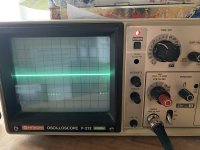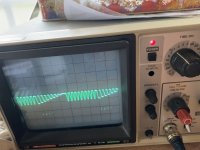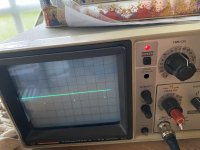A good sleep always works...
I agree with you that something is wrong with one side and not the other... Whether that is X or Y only you have the machine...
I would be expecting to see BOTH positive and negative pulses on both IC304 pin 2 and IC306 pin 2. These ICs operate as integrators, so the pulse should be present when you want the beam to move - and then not be present when you want it to be stationary. However, there may not be positive pulses depending upon how they are drawing the vectors... Can I just ask you to look (with different timebase settings) at IC304/2 and IC306/2 and see if there are any positive pulses or not?
The other thing that is strange is the 'extra low' glitches that are appearing on IC306 pin 6 (and not on IC304 pin 6).
I would be suspecting a faulty IC305 (4066B) or IC306. It could also be the integrating capacitor associated with IC306.
It might just be worth doing comparative checks with the oscilloscope as you move through the analogue circuitry between the X and Y channels and see what the differences are.
We do seem to be working in the dark (no pun intended - well, ok, a small pun intended). Should we also have a look at the Z signal path on the power board?
Dave
















